Sometimes overlooked by foreign travelers during a trip to Japan, the western part of the island of Honshu presents an obvious and practical trail for those doing the standard Osaka and Kyoto circuit. This practical guide shows you how you can do a trip from Himeji to Okayama and Kurashiki up to Hiroshima in this 4-day itinerary.
Table of Contents
Day 1 – Himeji
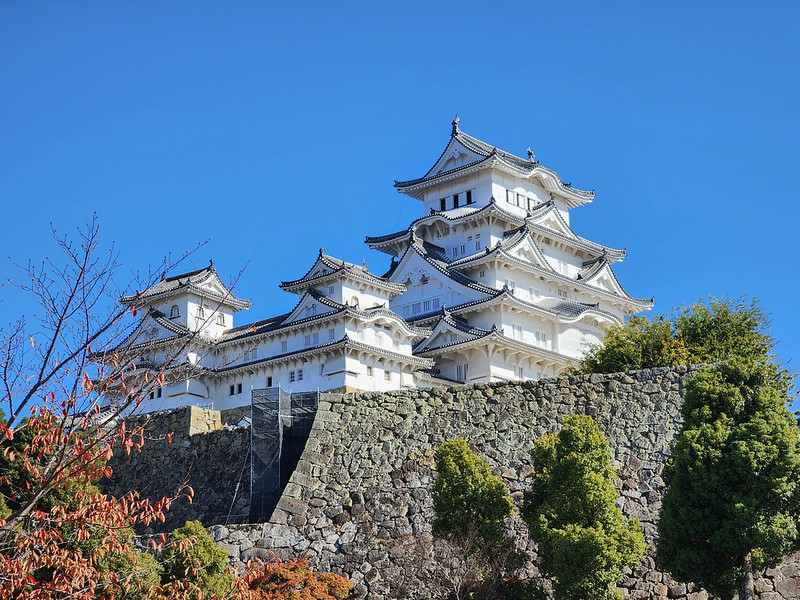
himeji castle
Located roughly 30 minutes by shinkansen from Osaka, the relatively quiet city of Himeji is squarely known for having the largest and best-preserved castle in Japan – Himeji Castle. From the station, the castle is clearly visible and is frequently described by locals as being akin to a white heron taking flight due to its white color.

view of the castle walls of himeji castle
Allow an hour or so to fully explore the castle as well as its surrounding gardens. At the entrance, you will have the option to purchase a standalone ticket of the castle or one with an adjacent garden called Koko-en at a bundle price. I would recommend going for the bundle tickets as Koko-en is also worth checking out especially during autumn season. I proceeded to Koko-en after my visit to Himeji to find a snaking queue at the Koko-en ticket counter. I was so relieved that I already had a ticket and didn’t need to queue!
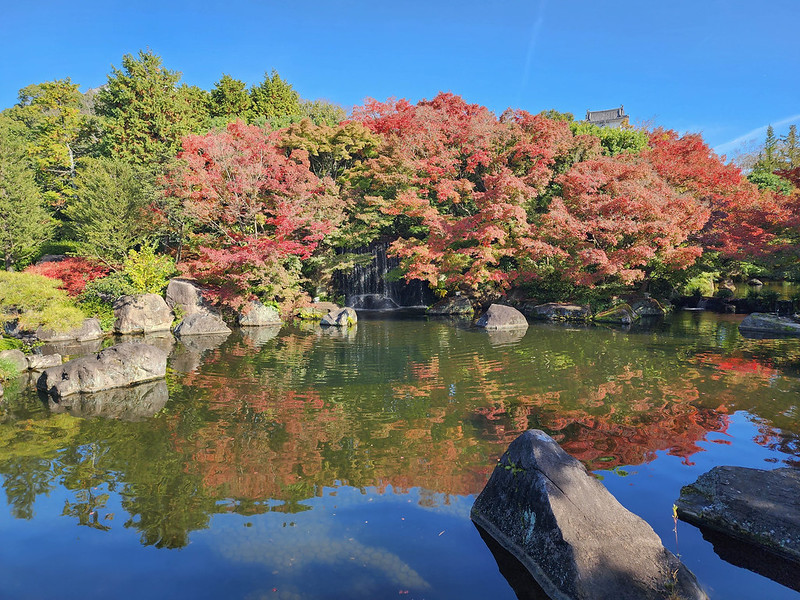
koko-en in himeji
Koko-en is a relatively modern construct, having been built only in 1992. However, you do get value for money here as the compound houses 9 different Japanese gardens. I especially loved the parts with the waterfalls and bridges, and together the whole scene made for beautiful photo spots. There is also a teahouse near the exit where guests can drink matcha with a view of the foliage. It’s especially colorful in autumn, but is well worth a visit regardless of the season.
Another place to check out when in Himeji is Engyo-ji. You can catch a bus from Himeji Station or from the bus stop near Himeji Castle. It’s approximately 30 minutes to the ropeway station, from where you can take a cable car up the temple at Mount Shosha.
Day 2 – Okayama / Kurashiki
From Himeji, take another shinkansen ride to Okayama – typically a 20 minute ride on the faster trains. A mid-sized city, Okayama is known among the Japanese as the setting for momotaro or peach boy. As such, it is perhaps of no surprise that most souvenir shops in the city feature peach-flavored sweets and pastries while juice stands offer peach slushies.
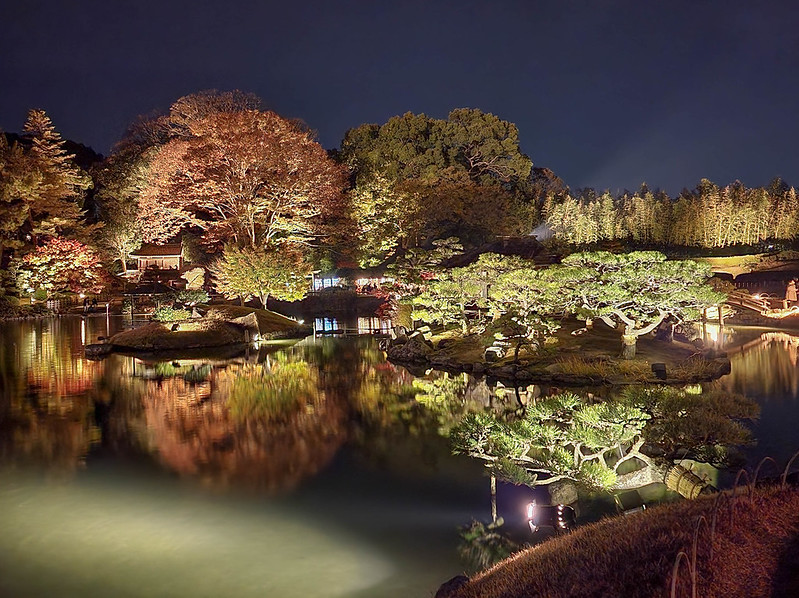
koraku-en, okayama
Okayama is also well-known for Koraku-en which is revered as one of the 3 great gardens in Japan. Literally, it is translated in English as the “After Pleasure Garden.” The Edo-era park is a must-see, even for those who have been to other gardens in Japan. It’s filled with beautiful ponds, small hills, bridges and a mini version of a bamboo forest. From certain angles, it looks imposing with the black Okayama Castle in the background. During certain periods, the garden is filled with dream-like illuminations at night for visitors to enjoy. I was fortunate to be in Okayama on a day when the Koraku-en was open at night and immediately grabbed my chance for a visit.

okayama castle
From Koraku-en, it is a short walk to Okayama Castle via a bridge. Most castles in Japan are white but the one in Okayama is rare because it’s black. The original construct dates back from the 1597 with the present structure a faithful reconstruction. It’s also nicknamed as “crow castle” due to its distinctive dark color.
If you are into cycling, you can explore Okayama’s Kibiji district by bike. The Kibiji Cycling Trail is a scenic route that takes you to various shrines, temples and beautiful sunflower fields. This is a well-established route lasting about 1 to 2 hours suitable for beginners. Bikes can easily be rented when you arrive at the station (Bizen Ichinomiya). The trail itself starts in Okayama Station but the more scenic parts appear when you reach Bizen Ichinomiya.
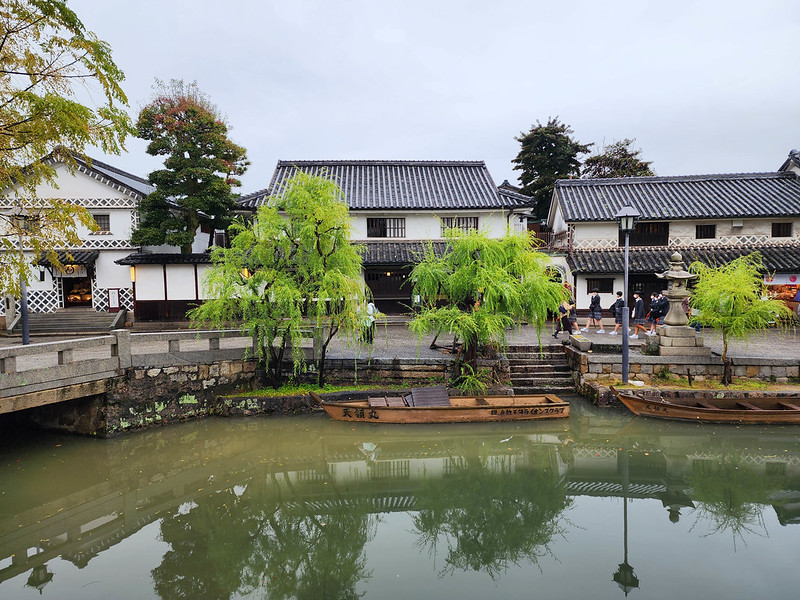
kurashiki
After having your fill of Okayama, it’s time to head to the neighboring city of Kurashiki for a slice of old Japan. Geographically, Kurashiki can be thought of as as part of a metropolis that also includes Okayama as the divide between the two cities is increasingly getting blurred due to urban development.
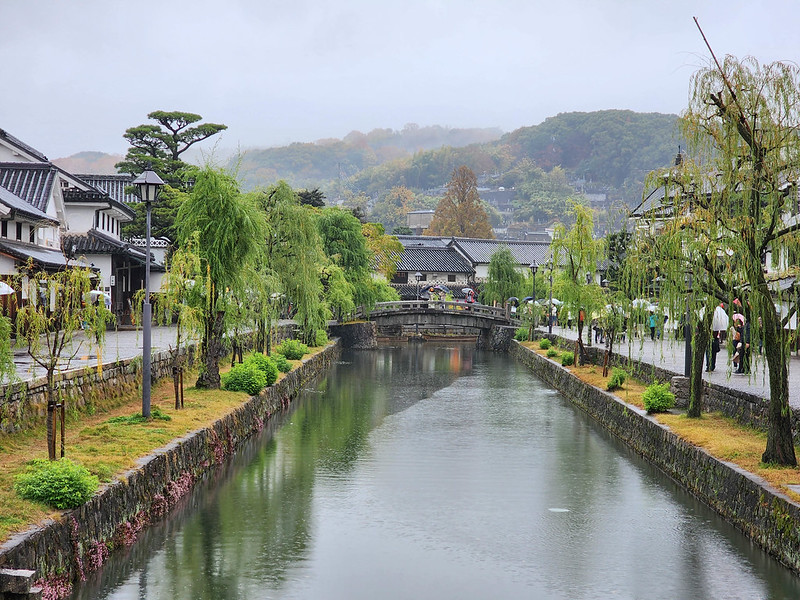
kurashiki bikan quarter
Kurashiki is noted for its historic merchants quarter, a highly atmospheric old town with preserved buildings from the Meiji Restoration. While there are plenty of old towns in Japan, what makes Kurashiki special is the canal in the middle of the center which adds to the ambiance. Although it’s rather short, visitors can go for a boat ride along the canal. The Bikan Historic Area, which is how the old town of Kurashiki is called, can easily be explored in half a day.

mimura coffee in kurashiki
Get lost in a maze of streets and alleys filled with shops selling the local specialties. While here, make sure to stop by Mimura Coffee (炭珈琲 三村) for an excellent brew. The owner/barista is very passionate about the beans used and during my visit I tried the coffee beans from Timor.
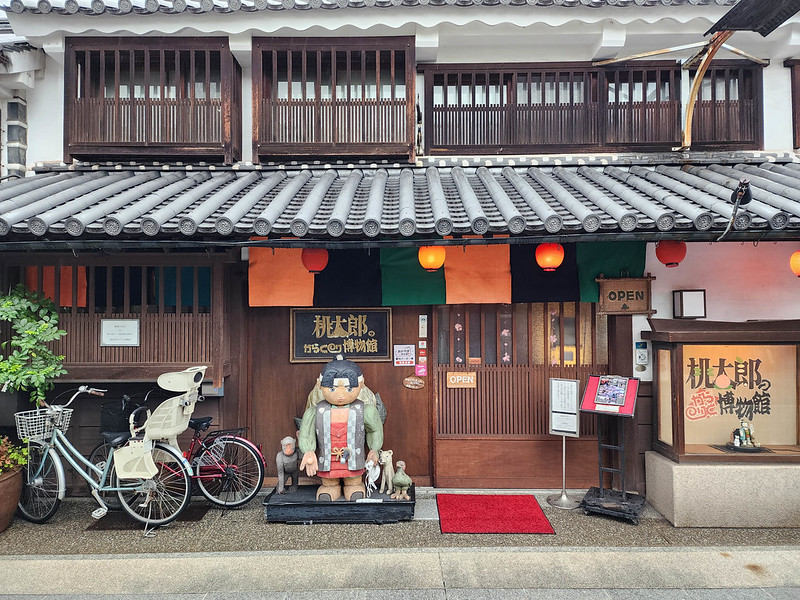
momotaro museum in kurashiki
There are a few attractions around the old town such as the Ohara Museum of Art, Momotaro Museum and Ohashi House (an old merchant house) but the best way to enjoy, like most old towns, it to walk around and discover the surprises that await. Alternatively, you can also go for a rickshaw ride with a “driver” showing you the ins and outs of the old quarter.

tempura bukkake udon in onishi, kurashiki
A popular place to dine in Kurashiki is Onishi. They are known for their handmade udon and good value lunch sets. I tried their mixed tempura bukkake udon and found the soup delightfully sweet – just nice for the cold, rainy weather during my visit.
Day 3 – Hiroshima
A city of relatively large size and importance in Japan, Hiroshima is a city of clean and wide, tree-lined avenues, bustling nightlife as well as its own cuisine. To most outsiders, it is known as one of the cities where the atomic bomb was dropped during World War II. Few sites remain except for a few reminders concentrated in the city center.
Most of the World War II related attractions are situated around the Peace Memorial Park by the banks of the Motoyasu River.
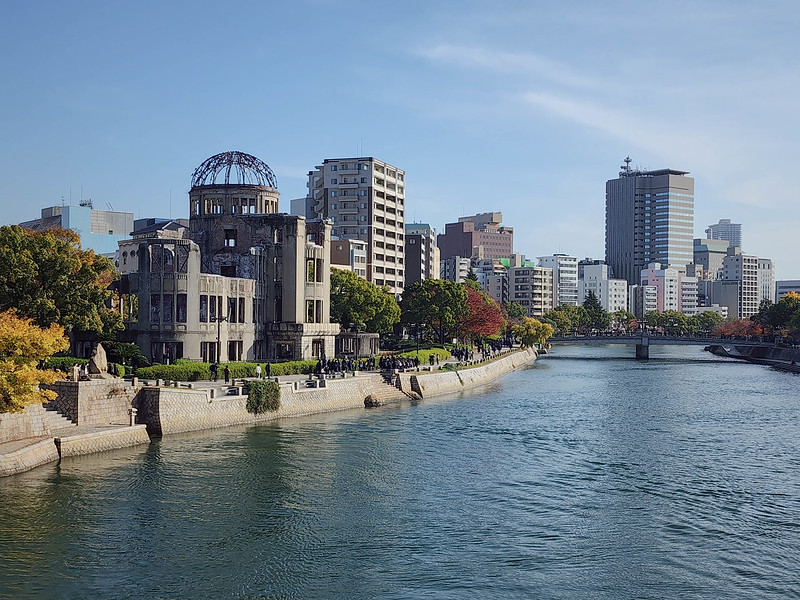
atomic bomb dome in hiroshima
The Atomic Bomb Dome stands as perhaps one of the most identifiable structures in Hiroshima. It originally dates back as an exhibition hall. On that fateful day in August 1945, the nuclear bomb was dropped not too far off from the dome and immediately killed everyone that was inside (as well as the surrounding areas). During the city’s rebuilding, there was much discussion regarding what to do with the dome, with authorities eventually deciding to preserve it. In 1996, the dome was declared a UNESCO World Heritage Site.
To the south of the dome is the Hiroshima Peace Memorial Museum which features eye-opening exhibits about the bomb drop, its aftermath and how the city of Hiroshima was affected. Like other war-related museums, expect highly graphic images.
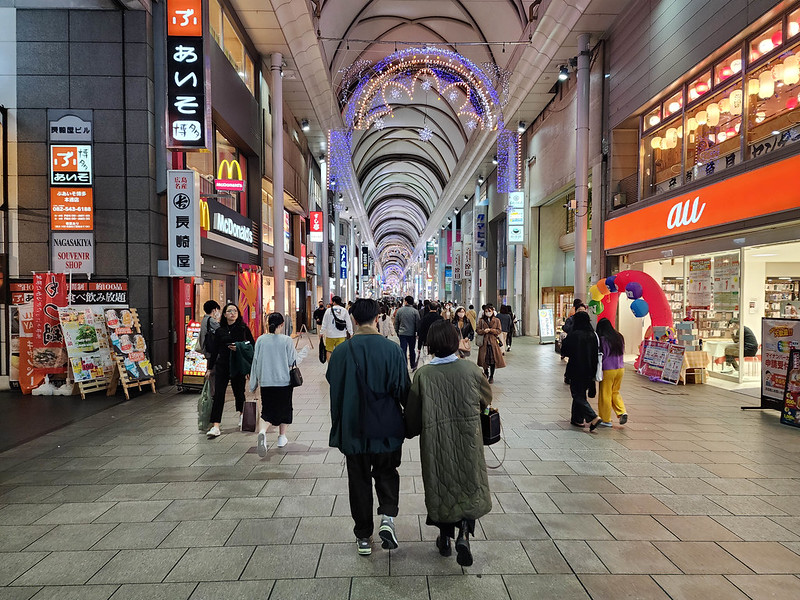
hondori shopping arcade in hiroshima
On a lighter note, you can shop your heart out at the nearby Hondori Shopping Arcade. It’s a covered shopping street that starts from near the atomic bomb dome in the west and stretches until the PARCO Hiroshima Store to the east. Here, you’ll find many well-known brands, eateries as well as places selling local specialties. To the south of Hondori Street, in the areas of Nakamachi and Fukuronakamachi, you’ll find Hiroshima’s hipster area with quaint cafes, art galleries and specialty clothing stores. If you are in need of a cup, check out Bagtown Coffee which seems to be perpetually busy. They also sell more than a dozen different beans for home use.
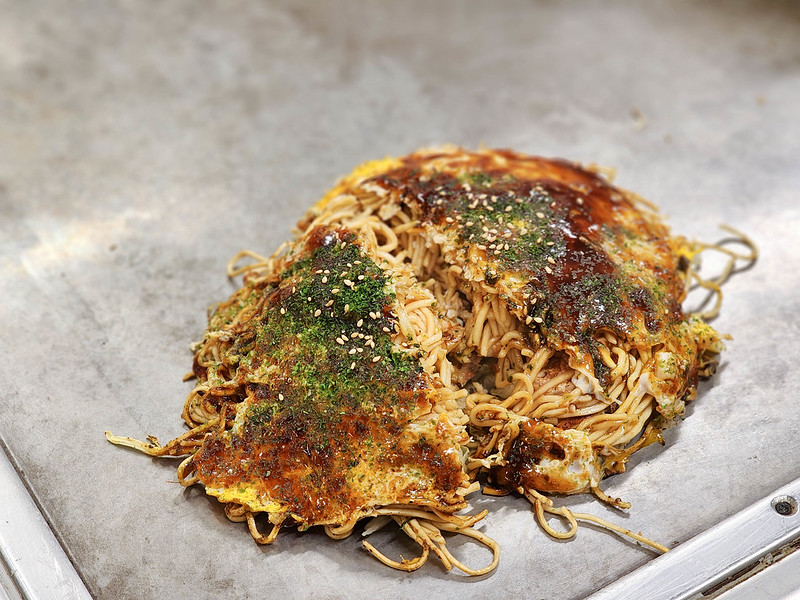
hiroshima style okonomiyaki
Food-wise. Hiroshima is known for three things – anago (conger eel), oysters and Hiroshima-style okomomiyaki. For those used to the okonomiyaki in Osaka, the one in Hiroshima is different – less dough-y but with an added layer of noodles in the middle. For good Hiroshima-style okonomiyaki, check out Okonomimura (translated as: Okonomiyaki Village). You’ll get 3 floors of okonomiyaki stands. All you need to do is choose for a stall that you like, or has available seats. Some folks order oysters or fried chicken on the side.
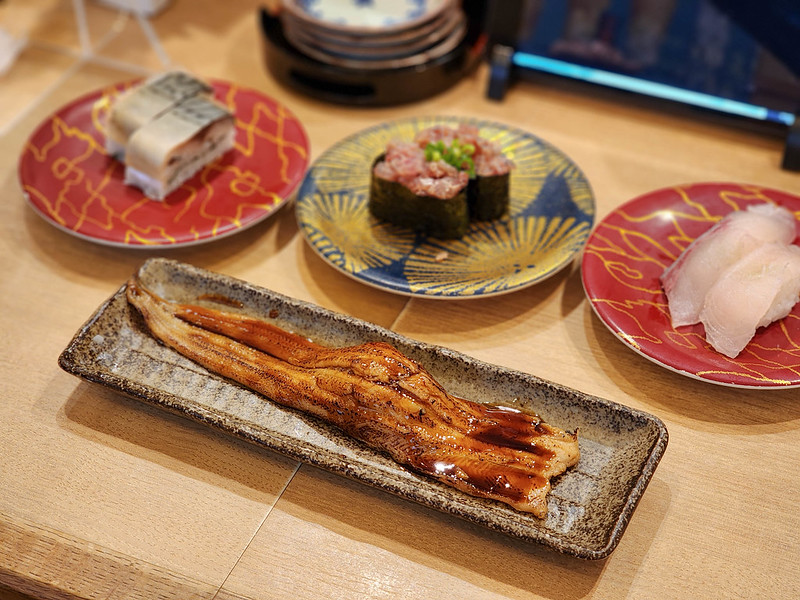
sushi assortment from nonta sushi
Another restaurant to try near the Hondori area is Nonta Sushi. Their fish comes direct and fresh from the wholesale market from the seaside towns near Hiroshima. One can try the local specialty – anago (conger eel) as well.
Day 4 – Day Trip to Miyajima
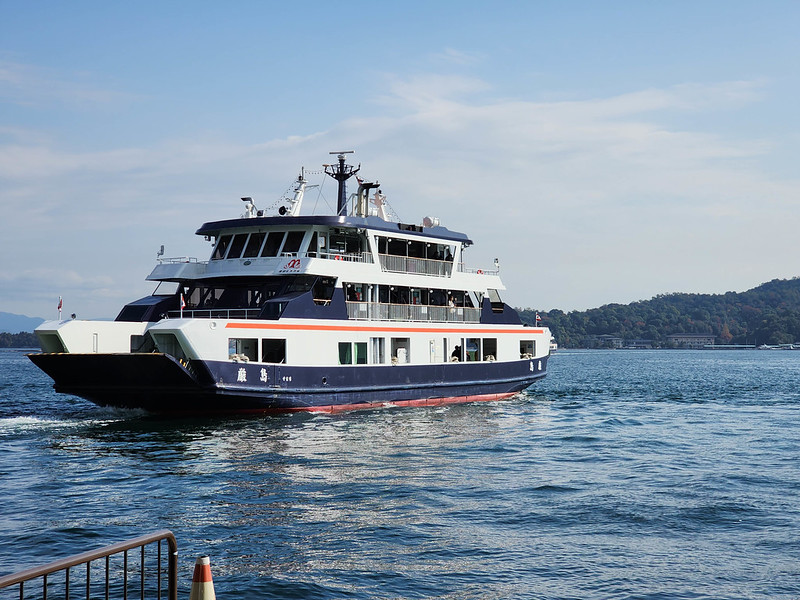
miyajima ferry
Depending on where you are staying in Hiroshima, take either the JR train or tram to Miyajimaguchi / Hiroden-Miyajimaguchi station to take a short 10-minute ferry ride to Miyajima. If you are taking the tram to Miyajimaguchi, allow for at least an hour’s travel time as the tram makes around 30+ stops from the city center.
Alternatively, you can take this day tour that brings you around the sights of Hiroshima plus a direct ferry from Hiroshima to Miyajima without the long tram ride to the pier.
Tip: If you have any of the JR passes, take the JR ferry for a free ride to/from Miyajima. You will need to pay if you take the boat of the other ferry company from the pier.

itsukushima shrine
Miyajima is regarded by the Japanese as one of their “3 great sights” (日本三景). There is this iconic image of Japan that foreigners usually see, that of a torii gate seemingly floating on the sea. That image – that of the Itsukushima Shrine – was actually taken here. It’s a UNESCO World Heritage Site and the whole complex actually comprises more than just the torii gate, including multiple hallways decked in red. Near the floating torii gate, there is a wooden platform that visitors can walk through to go around it. Visitors can also go on a boat ride to see the floating gate from another angle.
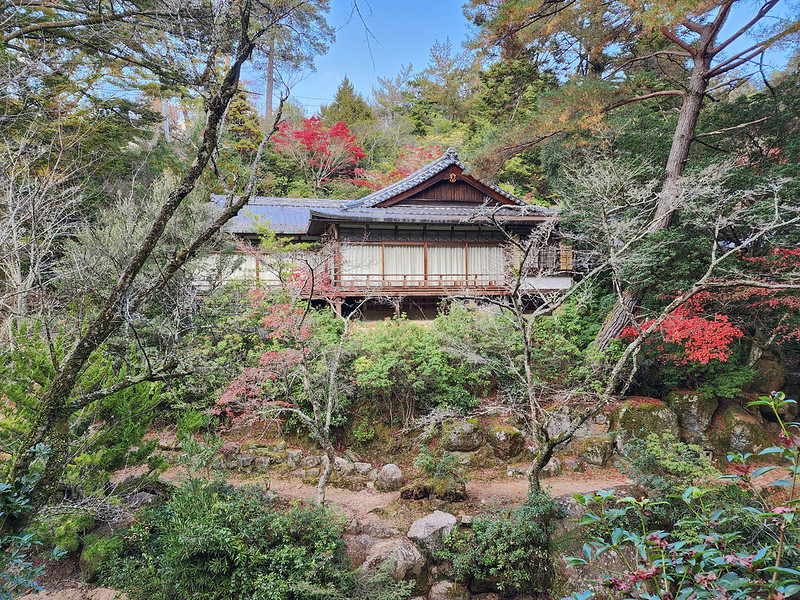
momjidani park
Other than the shrine, there are loads of other things to see on the island including Momijidani Park which is especially popular during autumn season.
For a bit of an old town atmosphere, take a stroll through Miyajima’s Omotesando – the main commercial stretch on the island housing plenty of shops selling local snacks and specialties.
For a quieter strolling experience, check out the next street parallel to the Omotesando which is Machiya Street. This is a street filled with tea houses, cafes and locals’ homes and you’ll be away from the crowds here despite being only one street away.
Allow a full day to explore the island, especially if you also intend to climb to Mount Misen. There is a cable car station from Momijidani Park that takes you to the peak.
Getting Around
I used the JR Sanyo San’in Area Pass via Klook to get around the places listed here. The good thing about this pass is you can also use it to visit Osaka and Kyoto if you like and that the faster Nozomi trains are also included with this pass, unlike the JR Whole Japan Pass which specifically excludes Nozomi trains. I was also able to use this pass to take the local JR train that links Okayama and Kurashiki as well as the JR ferry to Miyajima Island.
Where to Stay in Hiroshima, Okayama and Himeji
Hiroshima – The Knot Hiroshima is a relatively new hotel (opened in 2020) situated near Peace Boulevard. Rooms are elegantly done with the more spacious rooms possessing relatively wide windows with plenty of natural light.
Okayama – In Okayama, you’d be hard-pressed to find a hotel that’s even more convenient than the ANA Crowne Plaza Okayama which is situated right next to Okayama Station via a fully-covered walkway.
Himeji – Richmond Himeji is a reliable option in town. It is a roughly 5 minute walk south of Himeji Station. For a Japanese business hotel, the rooms are of decent size partly due to the sink space being integrated with the bedroom.
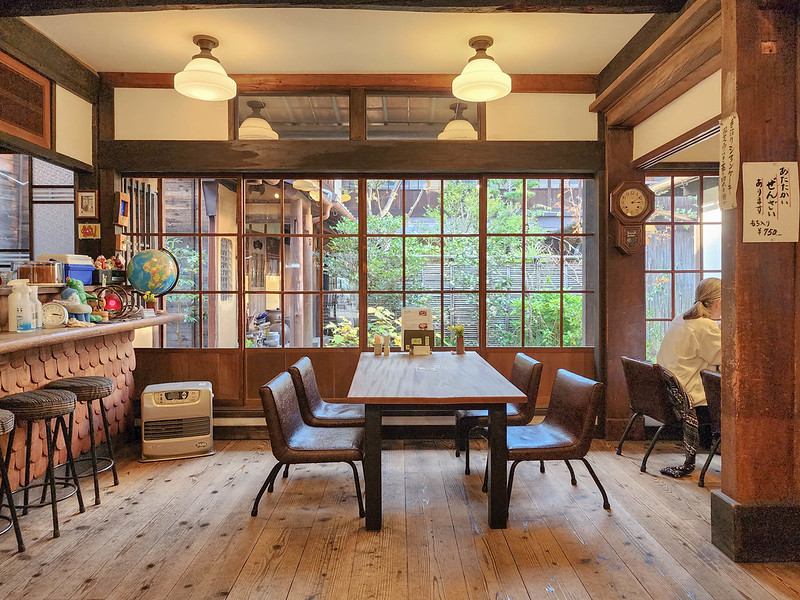






Leave a Reply